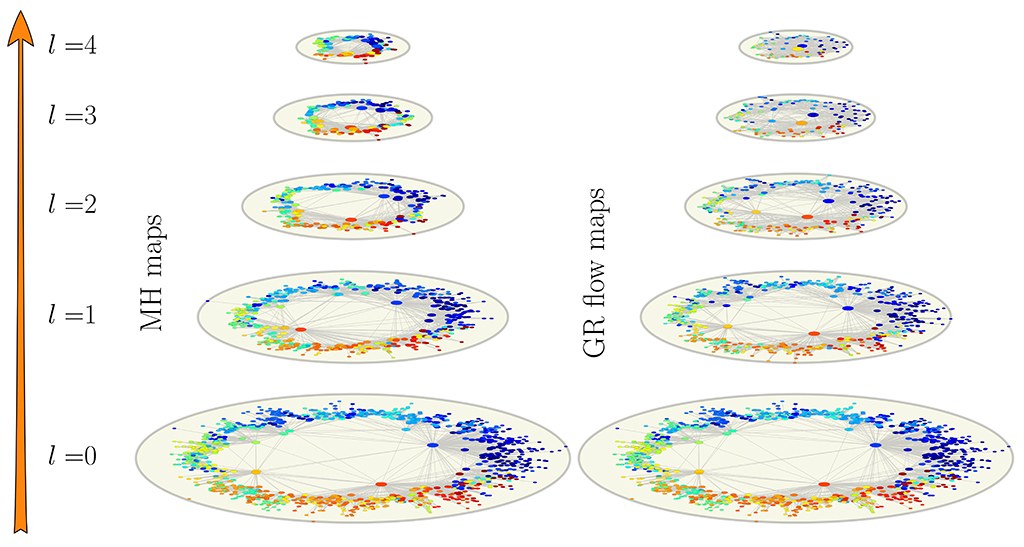M. Ángeles Serrano – Universitat de Barcelona (UB)
The architecture of the brain supports cognitive and behavioral functions and it is extremely complex with connections at multiple layers that interact with each other. However, research efforts are usually focused on a single spatial scale. In a study led by ICREA research professor M. Ángeles Serrano, researchers studied the multiscale spatial organization of the brain and observed that, in a geometric network model, the layers at different resolution are self-similar, that is, as we move away, the geometric and connectivity structure of the layers remains the same.
In order to carry out this study, researchers used two high-quality datasets with networks of neural connections, connectomes, of eighty-four subjects with five anatomical resolutions for each that expand over a series of interrelated length scales. According to Prof. Serrano, “the self-similarity we determined as a pattern in the multiscale structure of the human connectome implies that brain connectivity at different scales is organized under the same principles, that lead to efficient decentralized communication”. This means that underlying connectivity rules that explain the brain’s connectome are independent from the observation scale and we do not need a specific set of rules for each scale.
The model predicts observations through the application of a renormalization protocol that uses a hyperbolic network map of the human connectome, so that regions at short distances are more likely to be connected. This type of model enables researchers to explain the universal features of real networks and their multiscale structure. For every scale, there is a remarkable congruence between empirical observations and predictions provided by the model. The results show that the same rules explain the formation of short and long-range connections in the brain within the rank of length scales that cover the used datasets.
The implications of this discovery are several. On the one hand, it can be useful in fundamental debates, such as whether the brain is working close to a critical spot. On the other hand, it can have applications for advanced tools on brain functioning simulation.
